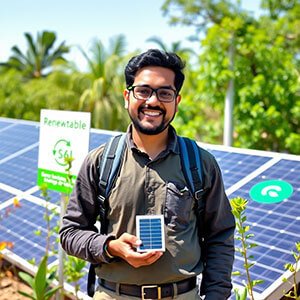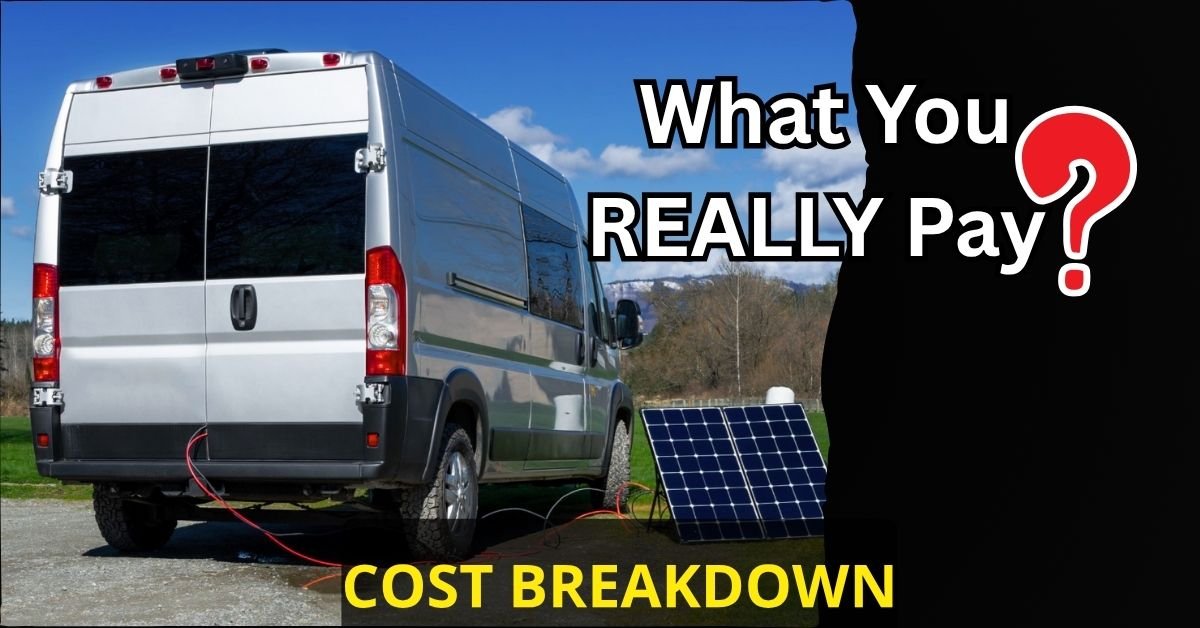Which is the best tilt angle for solar panels by country (GEO-location based), and which direction is correct for setting it? Read this article to unlock Maximum Efficiency and output from your solar project.
Did you know that adjusting your solar panels by just a few degrees can boost energy production by up to 20%? If you want to maximize efficiency and savings, finding the best angle for solar panels is crucial.
In this guide, I’m telling the optimal tilt and direction for solar panels based on your location, seasonal changes, and common mistakes to avoid. So no matter where you live, I hope you’ll get maximum efficiency from your panel sets.
Why Panel Direction Matters
The direction solar panels face directly influences how much sunlight they receive during the day. Since solar energy production depends on sunlight exposure, orientation and tilt play a huge role in maximizing your system’s performance.
- Direction: In the Northern Hemisphere, panels should generally face south, while in the Southern Hemisphere, they should face north.
- Angle: The optimal tilt depends on your latitude and seasonal sun position.
A well-positioned solar system can increase efficiency, lower electricity bills, and shorten payback periods.
Pro Tip: Avoid shading from trees, buildings, or other obstructions, as even partial shade can drastically reduce your panel’s efficiency.
You can read: Different Types of Solar Panels Explained (Monocrystalline vs. Polycrystalline).
Which is the Best Tilt Angle for Solar Panels by Country and Direction?
While the general rule of thumb is south-facing (north-facing in the Southern Hemisphere), the best angle for solar panels depends on your geographic location, latitude, and seasonal sun path.

Best Angle by Region
Let’s learn the ideal angles based on different countries’ latitudes.
China
China has diverse climates, but generally, a tilt angle between 30° and 40° works well for most regions. Northern areas like Beijing benefit from steeper angles, while southern cities like Guangzhou require shallower tilts.
- Best angle: Between 30° and 40° depending on the region (adjust +15° in winter, -15° in summer).
- Best Direction: Southern China can benefit from a slightly lower tilt than northern areas.
United States
In the U.S., the optimal tilt angle ranges from 25° in Florida to 45° in Alaska . A good rule of thumb is to set the tilt angle equal to your latitude for year-round efficiency.
- Best angle: Equal to your latitude (e.g., 35° if you’re at 35° latitude). That means: Varies by state (e.g., 25° in Florida, 40° in New York).
- Best Direction: True south (or southwest in some western states).
- Regional tip: Southern states (Texas, Florida) can use a shallower tilt (around 25°).
India
India’s tropical climate means a tilt angle between 10° and 30° is ideal. Northern states like Delhi may require slightly steeper angles than southern states like Tamil Nadu.
- Best angle: Ranges from 10° to 30°
- Best Direction: Southern India needs less tilt; northern regions require more for winter optimization.
Bangladesh
Bangladesh benefits from a tilt angle of around 20° to 30° , ensuring consistent energy generation despite its flat terrain.
- Best angle: Around ~20° to 30°
- Best Direction: South.
- Tip: A fixed tilt of 25° offers a good year-round average.
Pakistan
Pakistan’s arid climate calls for tilt angles between 25° and 35° , depending on whether you’re in Karachi or Islamabad.
- Best angle: Between ~25° and 35°
- Best Direction: South
- Notes: Adjusting seasonally can further optimize performance.
Japan
Japan’s varied geography suggests tilt angles between 30° and 40° , especially in snowy regions like Hokkaido.
- Best angle: ~30° to 40°
- Best Direction: South
- Tip: With high rooftop density, avoid shading from nearby buildings.
Germany
Germany’s temperate climate favors tilt angles of 30° to 45° , particularly during winter months when sunlight is scarce.
- Best angle: ~30° to 45°
- Best Direction: South.
- Notes: A 35° fixed tilt works well for most installations.
Australia
- Best angle: ~20° to 35°, (north-facing).
- Best Direction: North
- Tip: Northern Australia can go lower (~20°); southern regions higher (~35°).
Brazil
Brazil enjoys abundant sunlight, so tilt angles between 15° and 25° are sufficient for most areas.
- Best angle: ~15° to 25°
- Best Direction: North.
- Notes: Close to the equator, so less tilt is needed.
South Korea
South Korea recommends tilt angles between 30° and 40° , especially in mountainous regions.
- Best angle: ~30° to 40°
- Best Direction: South
- Notes: A good average tilt balances seasonal variation.
Netherlands
The Netherlands benefits from tilt angles between 35° and 45° , compensating for shorter daylight hours.
- Best angle: Around ~35° to 45° degree angle.
- Best Direction: South
- Tip: Optimize for winter performance due to lower sun angles.
Spain
Spain’s Mediterranean climate supports tilt angles between 25° and 35° , maximizing summer and winter efficiency.
- Best angle: ~25° to 35°
- Best Direction: South
- Notes: Southern Spain may benefit from a slightly flatter tilt.
Bonus Tips: For exact angles, use a solar angle calculator based on your city’s latitude.
Tools for Angle Measurement
Getting the best angle for solar panels doesn’t have to be guesswork. Use these tools to simplify the process:
- Solar Pathfinders: These devices help determine the sun’s path and optimal angles for your location.
- Smartphone Apps: Apps like Sun Surveyor and Solar Panel Angle Calculator provide real-time data based on GPS coordinates.
- Online Calculators: Websites like PVWatts, and Solar-Estimate.org offer free tools to estimate energy production based on tilt and azimuth angles.
Bonus: Need also, Compass Apps (to determine true south/north), and Solar Pathfinder (for shading analysis).
Seasonal Adjustments
If you have adjustable mounts or a ground-mounted system, changing your panel angle throughout the year can improve output:
- Summer: Lower angle (latitude – 10°)
- Winter: Steeper angle (latitude + 10°)
- Spring/Fall: Angle close to your actual latitude
This approach maximizes exposure as the sun’s position shifts seasonally.
Fixed vs. Adjustable Mounts
Pros of adjustable mounts:
- Boost production by 5% – 15%
- Better seasonal efficiency.
Cons:
- Higher upfront cost
- Requires manual adjustment or automated tracking
Mistakes to Avoid
Avoiding these common pitfalls can save time, money, and headaches:
- Wrong orientation: Facing panels west or east without optimization can reduce output.
- Ignoring shade: Trees, buildings, or chimneys can block sun.
- Not considering roof pitch: Installing panels flat on a steep roof may misalign the angle.
- Neglecting local climate: Snow-prone areas benefit from steeper angles for shedding.
- Skipping professional input: A solar expert ensures accurate tilt, placement, and compliance.
Related Post: Off-Grid vs On-Grid Solar Systems. What’s the Difference?
Final Thoughts,
Finding the best angle for solar panels is a crucial step toward unlocking the full potential of your solar investment. By understanding regional nuances, leveraging measurement tools, and avoiding common mistakes, you can ensure your panels operate at peak efficiency year-round.
🌱 Have questions about solar panel installation or need expert advice? Please drop a comment below or contact us for a free consultation! Let’s make the world a greener place. ☀️








